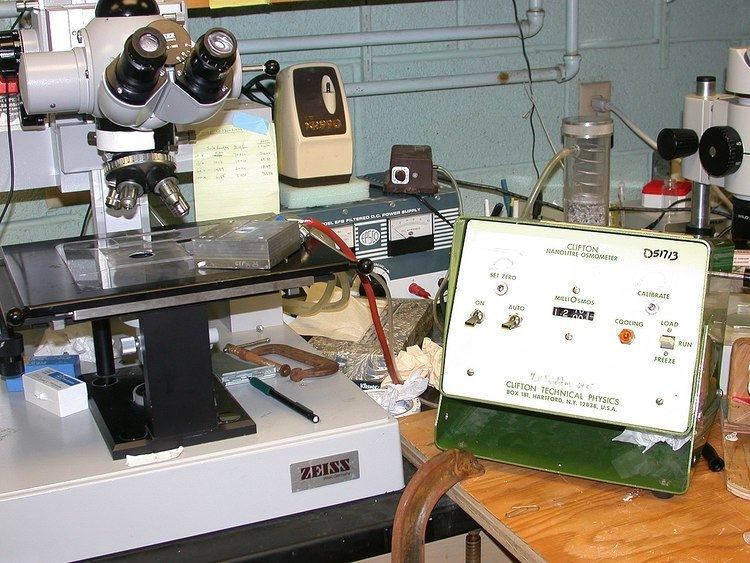 | ||
A Clifton nanolitre osmometer is a device that allows the determination of the melting and freezing point of an aqueous solution using a sample size of only nanolitres. The device consists of a controller box, a cooling stage, and a sample holder. Additionally, various micrometer syringes, immersion oils and microscopes are required for its use.
Contents
Cooling of the stage is achieved with the use of Peltier devices inside the cooling stage.
The Clifton nanolitre osmometer is especially well suited for determining the antifreeze activity or thermal hysteresis of a solution, which is a difference in the melting and freezing point of a solution. This phenomenon arises when biological antifreeze proteins are present in a solution. Solutions that do not contain antifreeze proteins generally have identical freezing and melting points.
Operation
A melting and freezing point determination consists of the following steps:
